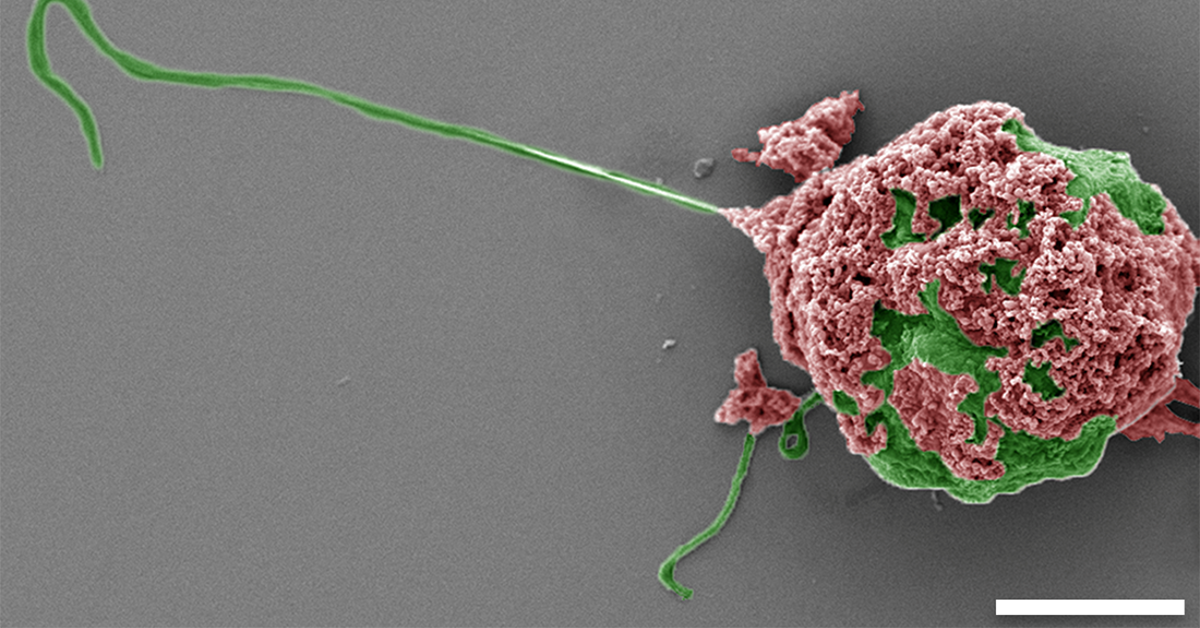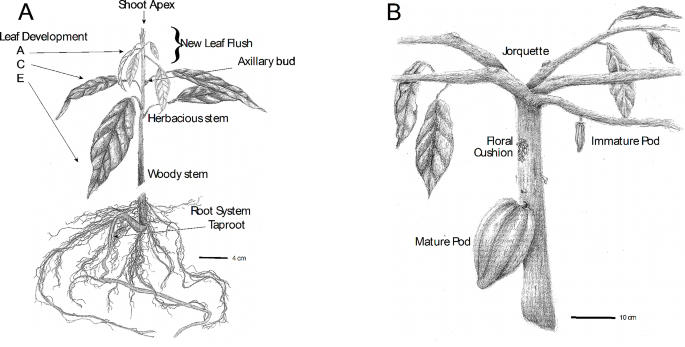2024-06-26 カリフォルニア大学サンディエゴ校(UCSD)

Colored SEM image of a microrobot made of an algae cell (green) covered with macrophage-mimicking nanoparticles (red). Scale bar: 5 µm. Credit: Li et al, Science Robotics
<関連情報>
- https://today.ucsd.edu/story/microrobot-packed-pill-shows-promise-for-treating-inflammatory-bowel-disease-in-mice
- https://www.science.org/doi/10.1126/scirobotics.adl2007
バイオハイブリッドマイクロロボットが炎症性腸疾患における大腸サイトカインと上皮バリアを制御する Biohybrid microrobots regulate colonic cytokines and the epithelium barrier in inflammatory bowel disease
ZHENGXING LI, YAOU DUAN, FANGYU ZHANG, HAO LUAN, […], AND JOSEPH WANG
Science Robotics Published:26 Jun 2024
DOI:https://doi.org/10.1126/scirobotics.adl2007
Editor’s summary
Regulating cytokine activity can effectively manage inflammatory bowel disease, but traditional treatments are immunosuppressant or only target specific cytokines. By combining the robust motion of green algae with the binding abilities of macrophage membrane–coated nanoparticles, Li et al. developed a biohybrid microrobot that captured and removed a range of proinflammatory cytokines in vitro. The algae-based robots were encapsulated for protective passage through the stomach and administered to mice. In vivo studies confirmed biosafety and successful prevention and treatment of inflammatory bowel disease in a mouse model. The algae-based robots also hold potential for treatment of other cytokine-related disorders. —Melisa Yashinski
Abstract
Cytokines have been identified as key contributors to the development of inflammatory bowel disease (IBD), yet conventional treatments often prove inadequate and carry substantial side effects. Here, we present an innovative biohybrid robotic system, termed “algae-MΦNP-robot,” for addressing IBD by actively neutralizing colonic cytokine levels. Our approach combines moving green microalgae with macrophage membrane–coated nanoparticles (MΦNPs) to efficiently capture proinflammatory cytokines “on the fly.” The dynamic algae-MΦNP-robots outperformed static counterparts by enhancing cytokine removal through continuous movement, better distribution, and extended retention in the colon. This system is encapsulated in an oral capsule, which shields it from gastric acidity and ensures functionality upon reaching the targeted disease site. The resulting algae-MΦNP-robot capsule effectively regulated cytokine levels, facilitating the healing of damaged epithelial barriers. It showed markedly improved prevention and treatment efficacy in a mouse model of IBD and demonstrated an excellent biosafety profile. Overall, our biohybrid algae-MΦNP-robot system offers a promising and efficient solution for IBD, addressing cytokine-related inflammation effectively.


